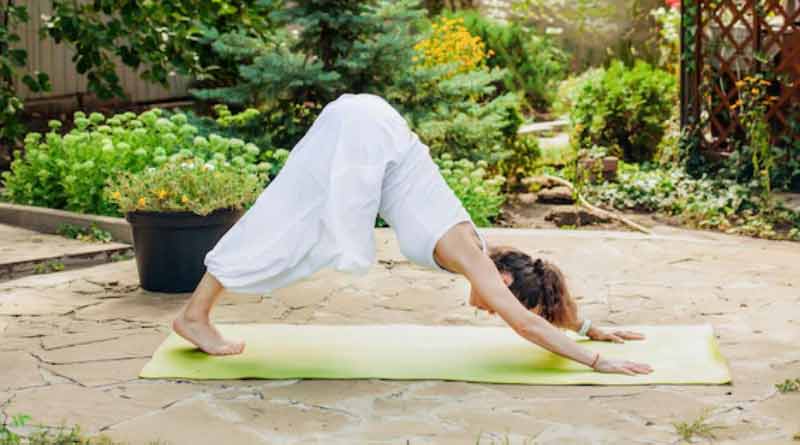Preparing for yoga teacher training is as important as participating in the training itself. Like any curriculum, preparation helps a class go deeper into learning, and fosters participation. And the more you learn, imbibe and practice, the better teacher you will be!
yoga pose should me know before yoga teacher training
Yoga for beginners is the first stage in the study of yoga. At this stage, a newcomer gets acquainted with the basic principles, learns breathing techniques, and studies the simplest asanas. Here are the main rules of yoga practice:
- Exercise is performed on an empty stomach. Within an hour before the training, it’s desirable not to take any food at all.
- During the class, you cannot drink, but you can freshen up immediately after the training. It’s better to have a bottle with pure water without gas in advance.
- Each asana must be performed consciously. You must fully concentrate on your movements and feelings, do not get distracted by what’s happening around you and try not to think about anything extraneous. This is one of the most difficult moments in yoga for beginners. But you have to learn how to do it. Without the ability to listen to your body and without the skill of mindful control of attention, you’re not going to make any progress in yoga.
- When practicing yoga, you have to be moderate and never force yourself to do asanas that cause pain or discomfort. If you can’t do any of the asanas, you should stop doing them for a while. Later, when the level of fitness increases, you can return to it, and perhaps its performance will not cause any more difficulties.
For yoga, choose clothes that do not constrain the movement. It is better not to wear shoes – yoga is practiced barefoot. It is better not to practice on a hard slippery floor but on a yoga mat.
Proper Breathing in Yoga
Working with breathing in yoga is as important as performing asanas. Inhales and exhales are done through the nose. Slow long inhalations are followed by an equally long slow exhalation. Each asana is performed for six breaths. When performing dynamic bindings movements are made in the rhythm of the natural breath, and not vice versa. If you bind the breath to the movement, it becomes more frequent, resulting in hyperventilation of the lungs. As a rule, bends are performed on the inhale and bends on the exhale.
To practice breathing through the nose, you should first sit down in the right position. It is recommended to take one of the comfortable positions: lotus pose, half-lotus pose, stool pose. The back should be straightened, the shoulders should be squared, and the hands should be placed on the knees. With a slouching back, shoulders were thrown forward and a clamped diaphragm, breathing exercise will not do any good. In such a pose, it will not be possible to fully relax and achieve a sufficient degree of concentration. After the correct posture is adopted, you need to breathe through the nose, fully concentrating on the breathing process.
Yoga Exercises for Beginners
Yoga for beginners offers many exercises, characterized by a fairly simple technique of execution. Here are a few such asanas.
Tadasana – Mountain Pose
Bring your feet together, straighten your back, and straighten your shoulders. Don’t put your body weight either on your toes or on your heels. Spread it evenly on the whole foot. Keep your head straight. Put your hands down along the sides or fold in front of your chest in the prayer mudra. Do six breathing cycles. Bring your fingers together and stretch your spine upward. With an exhalation, bring your hands down. Practice your ability to keep your balance by first closing your eyes and then doing a series of inhalations and exhalations while in mountain pose. This asana serves as the basis for all other standing postures. Tadasana tones, aligns the back, improves joint flexibility, and develops balance.
Vrikshasana – Tree Pose
First, stand in Tadasana. Then take your left foot off the floor and press it with the sole against the inner side of the right thigh. Fingers facing down, heel close to the groin. Take a breath and bring your hands together above your head. As you lift your arms, lead them across your sides. Perform 6 cycles of breathing. Switch the supporting leg and repeat the action. Exercise used to align the spine, train the vestibular system, strengthen muscles of the legs, back, and abs.
Uttanasana – Bend Toward the Feet
Start again with Tadasana. Then with an exhalation, lift your arms up and bend forward. Bend as if you were folding at the hip joints. Point your stomach toward your hips and your forehead toward your shins. Do not bend your knees. Put your palms on the floor, either on the sides of the feet, or behind the feet. This asana stretches the entire posterior surface of the body well. It improves the condition of the spine, develops flexibility of the back and legs, tones the internal organs of the abdomen, and calms the nervous system.
Paschimottanasana – Bending Over to the Feet in a Seated Position
Sit on your buttocks, stretch your legs forward. Raise your arms up, leading them through the sides, bend down to your feet and try to put your hands around your feet. Keep your back straight while bending. Bend as you exhale. With this exercise, you can improve digestive function, strengthen your legs, and straighten your spine.
Adho Mukha Svanasana – Downward-facing Dog Pose
Spread your feet shoulder width apart. Bend your knees and place your palms on the floor in front of your feet. Step your feet back, turning your heels slightly to the sides. Lower your head. Pull your coccyx upward. Asana improves blood flow to the brain, aids digestion, strengthens the legs, forms beautiful calves, and aligns the back.
Bhujangasana – Cobra Pose
Lie down on the mat with your stomach facing down. Arms bend, palms under shoulders. Breathe in and lift your body. Try to straighten your elbows fully. This pose strengthens the arms, back, and buttocks, and has a beneficial effect on the kidneys.
At the end of the class, lie in corpse pose (Savasana) for 15 minutes. Yoga does not seem to contain a simpler pose than Savasana. However, beginners quickly learn that this is not the case. It’s even harder to free your mind from anxious thoughts. However, as you practice it, you’ll get better and better. Don’t save time on Shavasana: it’s best if the exercise takes 15-20 minutes.
Yoga videos for beginners
If you are looking to bring a change into your life by learning yoga for self-rejuvenation or transfer the benefits to others, by getting a professional certificate and expertise, then Arogya Yoga School is the perfect fit for you.
Arogya Yoga School boasts a stalwart faculty for Yoga Philosophy, Yoga Anatomy & Physiology, Yoga Asana Practice, Pranayama & Meditation, and Yoga Teaching Methodology. They have been in the teaching field for many years and have also participated in seminars and workshops across the subcontinent, and the world. They continue to strive towards propagating Yoga despite many accolades and awards to their name.
Course certification-
Our all courses are yoga alliance USA & Government of India certified that enables everyone to teach anywhere around the world as a certified yoga teacher.



